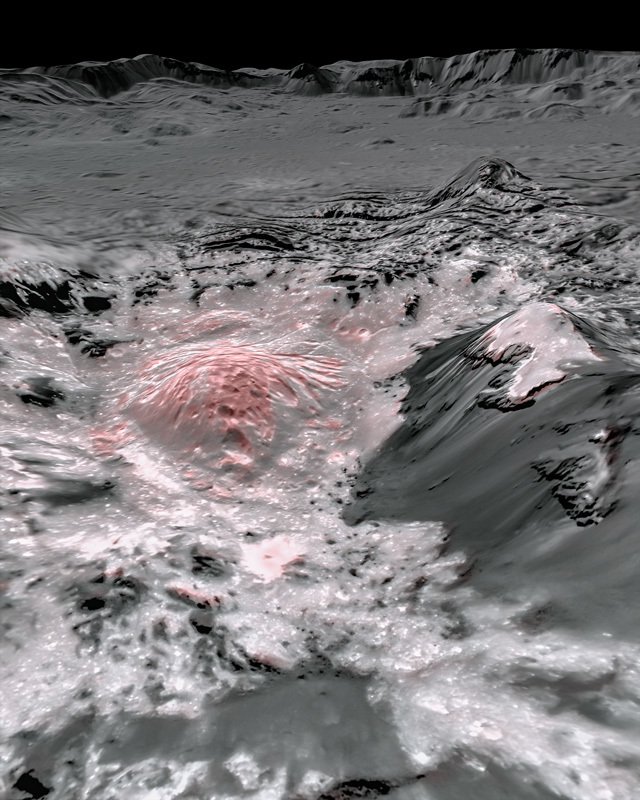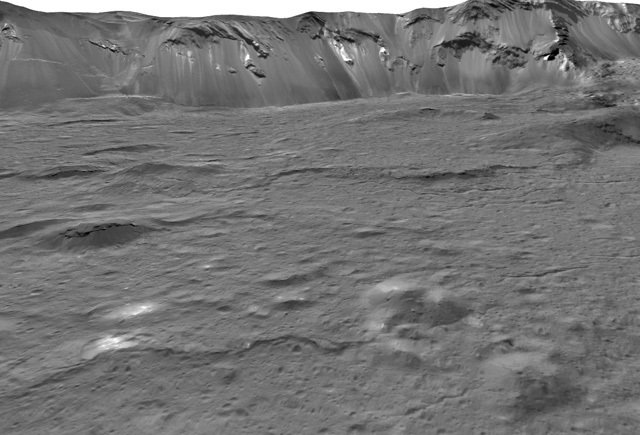Hidden ocean world on dwarf planet Ceres suggests potential for harboring life as mystery of bright spots solved
It’s long been believed that the dwarf planet Ceres is little more than a barren rock floating in space. However, a major exploration mission has found that a fascinating ocean world lies just beneath its surface.
Experts had been baffled by the bright spots that shimmer on the surface of our solar system’s largest asteroid, which sits between Mars and Jupiter. Because the giant space rock has its own gravity, NASA’s Dawn spacecraft was able to capture high-resolution images of Ceres, by hovering about 35km (22 miles) above the surface.
The experts focused their observations on the 20-million-year-old Occator crater and determined that there is an “extensive reservoir” of salty seawater sloshing around in the dwarf planet’s interior.

With the help of infrared imaging, scientists confirmed the presence of hydrohalite. The compound is common in sea ice but had never previously been observed outside of Earth.
An analysis of data collected near the end of the Dawn mission concluded that the salty water came from a deep reservoir within the dwarf planet. Through studying Ceres’ gravity, the scientists were able to determine that the reservoir is about 40 kilometers (24.8 miles) deep and hundreds of kilometers wide.
The researchers say this is a tell-tale sign that the asteroid used to have seawater. “We can now say that Ceres is a sort of ocean world, as are some of Saturn’s and Jupiter’s moons,” Maria Cristina De Sanctis, a researcher from the National Institute for Astrophysics in Italy told AFP.

The study, published in Nature Astronomy this week, reveals that the salt deposits likely accumulated in the last two million years, a mere drop in the ocean in space time terms.
This finding suggests that the salt water may still be rising up from the planet’s interior. “The material found on Ceres is extremely important in terms of astrobiology,” De Sanctis said. “We know that these minerals are all essential for the emergence of life.”
Also on rt.com NASA warns of upcoming close shave with asteroid as doomsday preacher predicts ‘apocalyptic fireball’Like this story? Share it with a friend!













